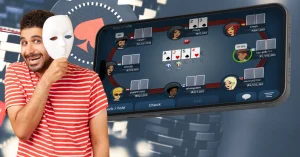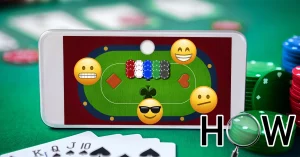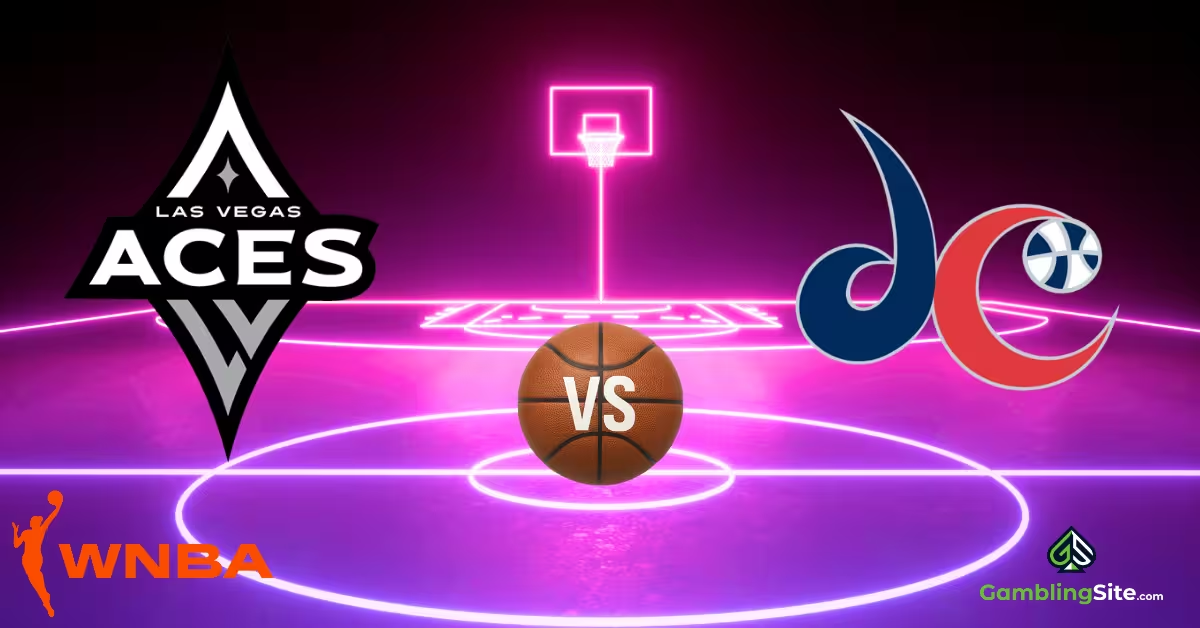How to Use a Poker HUD to Improve Your Online Poker Strategy
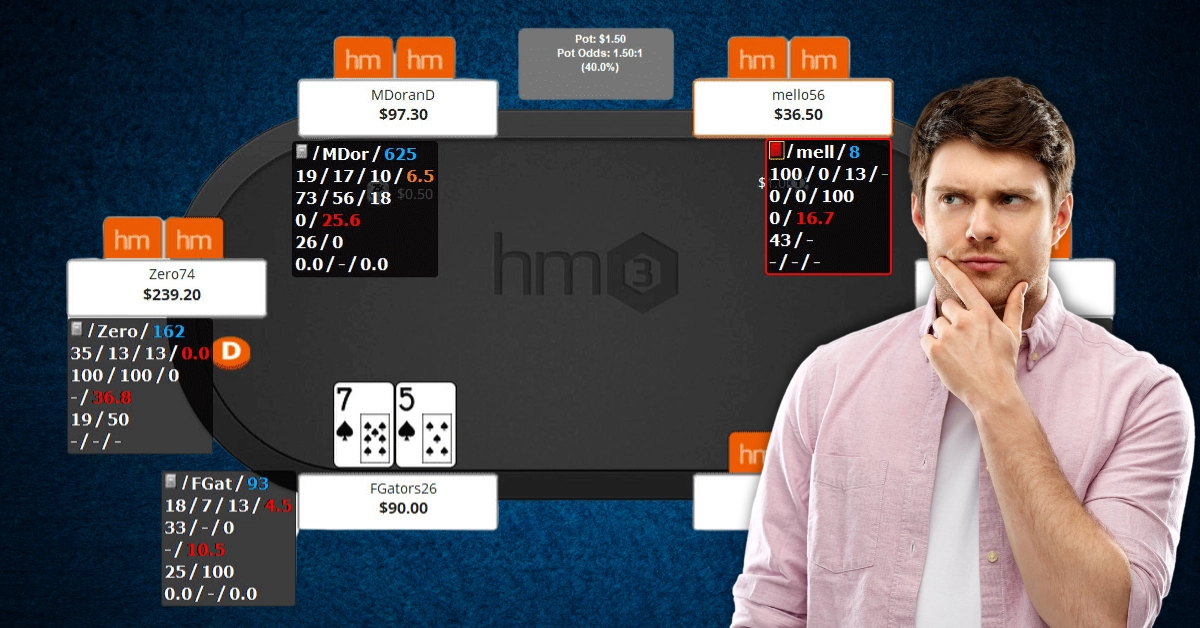
You’re at an online poker table on your fav gambling site, and the player who is two seats to your left keeps raising preflop like they’re actually deathly allergic to folding. Are they a disciplined pro or a reckless gambler who someone might need to stab with an Epi-pen if they go into anaphylactic shock? Without any insider intel, it’s all a guessing game—that is, unless you’ve got a Poker HUD up your sleeve.
What’s a Poker HUD? It stands for “Heads-Up Display,” and it can be your own personal poker lab. It dissects every hand, every bet, and every opponent’s tic to serve up t he data like a mad scientist would hand over lab results. And it’s not just number-crunching, no sir; it’s also about seeing any leaks in your game and exploiting the weaknesses in others. And in an online world where pixels sometimes replace real poker faces, a HUD is your BFF if you want to play smarter, not harder.
If you are ready to stop playing with your cards face up, we can be of service—we’ll tell you how you can turn raw data into a solid ally by using a HUD to level up your online poker strategy. Deal? Deal!
What Is a Poker HUD and How Does It Work?
Alright, first up we need to figure out what a Poker HUD is and how it works! Basically, it’s software that beams important stats about your opponents onto your screen during a game. You could say it’s akin to playing poker with X-ray vision—except instead of seeing the other players’s cards, you will see habits, tendencies, and holes in your rivals’ strategies.
This is how it works: As you are playing, the HUD is silently analyzing hand histories from your current session (and previous ones, if you’ve got the data). It calculates metrics like VPIP (how loose someone plays), PFR (how aggressive they are pre-flop), and Aggression Frequency and then displays these numbers right next to each player. Now, “BluffBuster69” doesn’t seem so intimidating when you know they fold to river raises 75% of the time!
Tools like PokerTracker 4, Hold’em Manager 3, and DriveHUD are the engines behind all of this intel. They sync with your poker client, thereby tracking thousands of hands to build profiles on your opponents. It’s like having a team of minions who are taking notes on everyone’s habits—except these minions don’t sleep, never miss a detail, and they work for free after the initial buy-in.
How does it all work? We swear there is no hocus-pocus at hand—it’s just code. The HUD reads hand histories, processes trends, and serves up insights quicker than you can say, “ugh, bad beat.” You can concentrate on honing your strategy; the software will handle the spreadsheets. It’s like having a trusty golf caddie that gives you good intel, like, “They always miss putts to the right.” Only this “caddie” resides in your computer or device.
Key HUD Statistics and What They Mean
It’s hard to see through the fog of poker terms and jargon—there’s a lot to remember! That’s where HUD stats come in handy—they’re like subtitles for your opponents’ strategies, and they translate sneaky or cryptic moves into plain English. The following is your secret decoder ring for the metrics that separate the clueless from the clairvoyant in the game of poker!
| Metric | Details |
|---|---|
VPIP (Voluntarily Put Money in Pot) | This tracks how often a player will jump into the action preflop—calling or raising instead of folding. A high VPIP (say, 35%+) shouts out, “I’ll play any two cards!” and a low VPIP (under 15%) signals a nit who only shows up when they have premium hands. Spotting this tells you who you can bully with bluffs and who you should not mess with unless you’ve got the goods. |
PFR (Pre-Flop Raise) | PFR measures their enthusiasm for starting out strong. If someone’s PFR is nearly as high as their VPIP, they’re aggressive (like raising with an A-5 offsuit). If it’s way lower, they’re a passive caller who is waiting for monsters. You can use this to identify who’s controlling the table and who’s in the passenger seat during the ride. |
AF (Aggression Factor) | This gives you the tea on how a player handles the post-flop drama. Calculated as (bets + raises) / calls, a high AF (3+) means they’re firing bullets at every opportunity, and a low AF (1.5 or less) means that they’re folding or calling like they’re terrified of their own shadow. You can adapt and adjust by ramping up your aggression against passivity and tightening up against maniacs. |
3-Bet Percentage | How often do they re-raise pre-flop after someone else raises? A 3-bet stat above 8% means they’re either a totally fearless pro or a loose cannon. Below 4%? They’re folding to pressure like a Dollar Store lawn chair. You can exploit them by 3-bet bluffing the timid players and respecting the fearless ones. |
Fold to 3-Bet | This reveals what kind of backbone they have when they’re facing a re-raise. If they fold 70%+ of the time, they’re practically begging you to 3-bet them into oblivion. If they’re under 50%, save your bluffs—they’re calling stations, and they have a doctorate degree in stubbornness. |
Fold to CBET | This lil’ beauty exposes their flop resilience. If they fold 60%+ to cbets, keep shooting like you’re paid by the bet. If they’re calling or raising most cbets (under 40%), pick your spots—they’re either sticky or setting up traps. |
Setting Up Your Poker HUD for Optimal Performance
A great HUD doesn’t mean that you should overload your screen with numbers—it should surface the right data at the right time. It should look like a minimalist workspace: clean, focused, and designed to eliminate any distractions. Look below to see how you can build a HUD that works for you and not against you!
Step-By-Step Guide to Setting Up Your Poker HUD
- Install & Connect: Download your HUD software (PokerTracker, Hold’em Manager, etc.) and link it to your poker site. Confirm it’s importing hand histories—this is your data lifeline.
- Start with Core Stats: Load the default HUD, then strip it down to the essentials: VPIP, PFR, 3-Bet%, AF, Fold to Cbet—these answer 80% of your strategic questions.
- Position Stats Near Players: Place key metrics directly next to each opponent’s seat. You shouldn’t have to hunt for numbers mid-hand.
- Test Drive: Play a short session at low stakes. If a stat isn’t influencing your decisions, remove it.
Tips for Customizing Your HUD Layout
Now for the fun part—customizing your HUD layout! The following are some tips to get you started:
- Color Code Sparingly: Use subtle colors to highlight extremes (e.g., red for VPIP >30%, green for VPIP <15%). Avoid rainbow explosions.
- Group Related Stats: Cluster pre-flop stats (VPIP, PFR) together and post-flop stats (AF, Cbet) separately. Less eye-jumping = faster decisions.
- Use Pop-Ups for Depth: Reserve advanced stats (like WTSD% or Steal%) for secondary panels or mouseover pop-ups. Keep your main HUD clutter-free.
- Fonts Matter: Choose clear, readable fonts. Fancy scripts might look really cool, but they’ll probably slow you down.
Why is it so important to have a balance of simplicity and depth with a poker HUD? Because one that’s cluttered with 20 stats is like trying to drink from a firehose—you’ll drown in all of the data.
If you overload your screen, it can cause the following:
- Slower Reactions: Time spent deciphering stats is time wasted.
- Decision Fatigue: Too many numbers = paralysis, not clarity.
- Missed Patterns: Important insights can get buried in the data.
Start with a minimalist setup. As you get more experience under your belt, you can add 1-2 stats at a time but only if they directly impact your strategy. If you’re targeting weak players, add Fold to 3-Bet. If you’re battling regs, incorporate 4-Bet%. The best HUDs will evolve with your game and like Rome, they weren’t built in a day.
Using a Poker HUD to Improve Your Online Poker Strategy
A HUD isn’t only a stats dashboard—it’s a cheat code that can help you to reverse-engineer the game. The numbers tell you stories, like who’s a bluffer, who’s a rock, and who’s just praying to the heavens for a miracle. Want to turn those stats into moves that make your opponents question all of their life choices? Here’s how you can do it!

Identifying Player Types
HUD stats give you the ability to categorize opponents faster than a TikTok algorithm works. Below is how it all works:
- Tight-Aggressive (TAG): Low VPIP (12-18%), High PFR (10-15%), High AF (3+). Respect their raises, avoid bluffs, and value-bet relentlessly when you have it.
- Loose-Aggressive (LAG): High VPIP (25%+), High PFR (20%+), High AF. Trap them with strong hands, call down lighter, and exploit their overbluffing.
- Tight-Passive (Nit): Low VPIP (<15%), Low PFR (<10%), Low AF (1-2). Steal their blinds, cbet relentlessly, and fold to their rare raises.
- Loose-Passive (Fish): High VPIP (30%+), Low PFR (<8%), Low AF. Print money by value-betting thinner and avoiding bluffs (they’ll call with anything).
Exploiting Weak Opponents
Weak players leak chips like loose lips sink ships, and you can use HUD stats to poke their holes by doing the following:
- High VPIP + Low PFR: They play too many hands but don’t raise. Punish them by isolating them with strong hands and barreling on scare cards.
- Low Fold to 3-Bet: They can’t let go of marginal hands. 3-bet them less (they’ll call) and value-bet bigger when you connect.
- High Fold to Cbet: They’re literally folding machines. Cbet every flop, then shut down if they call (they most likely have something).
Adjusting to Aggressive Players
The most aggro opponents want you to panic, but you can fight back with data:
- High AF (4+): Let them hang themselves. Check-raise their cbets with strong hands and float flops to steal turns/rivers when they slow down.
- High 3-Bet% (10%+): 4-bet bluff wider (they’re likely overdoing it), but fold to their 4-bets unless you’re nutted.
- Low Fold to 3-Bet: Stop bluff-3-betting. Wait for premiums and stack them.
Improving Positional Play
Position is power, and your HUD acts as a quantifier:
- Late Position Steal%: If a player folds 70%+ from the blinds, attack mercilessly with any two cards.
- Blind Defense Stats: Notice who defends their blinds aggressively (high 3-bet from BB)? Steal less, or 3-bet back with strong hands.
- In Position AF: Players with higher AF in position? Let them bet into you, then check-raise when you’re strong.
Refining Your Own Game
Your poker stats are a mirror—and sometimes, you see a not-so-cute reflection staring back at you. Use your HUD to fix any leaks and make your game more attractive.
- High Fold to Cbet: You’re bluffing TOO much. Tighten your cbet range or double-barrel less.
- Low 3-Bet%: You’re missing a lot of chances to pressure your opponents. Start 3-betting 6-8% of hands.
- VPIP by Position: If your VPIP is 25% UTG, you’re a walking ATM. Tighten up early, widen late.
Advanced HUD Strategies for Serious Players
A HUD in the hands of a serious player? It’s more than a tool—it’s a surgical scalpel. You’re not just reacting to the stats anymore; you’re dissecting them, exploiting micro-trends and engineering edges that are invisible to the naked eye. Want to push your HUD from “helpful” to “unstoppable?” Do the following!
– Streamline your HUD layout: Use only 3-5 core stats (e.g., VPIP, PFR, 3-Bet%) to avoid a visual overload. Your brain can’t process 20 stats across 8 tables!
– Prioritize note-taking: Assign quick color tags (red = maniac, blue = nit) to other players as you see any patterns. This speeds up decisions when they show up at other tables.
– Focus on outliers: At 10+ tables, target players with extreme stats (VPIP >35%, Fold to 3-Bet >75%). These are your profit hubs.
– Use table-selection tools: Pair your HUD with table selection software so that you don’t end up at reg-infested tables and are able to stalk fish across online poker game lobbies.
– Filter for critical moments: Use your HUD to review hands where your stats spiked (e.g., high Fold to Cbet) or tanked (e.g., low W$SD—won $ at showdown).
– Replay hands with opponent stats visible: Study how the players with specific HUD profiles (e.g., 40 VPIP / 5 PFR) exploited you, and then reverse-engineer their tactics.
– Identify population leaks: Identify any trends like “most players fold 65% to river bets” and adjust your default strategy to exploit the pool.
– Lifetime vs. session stats: A player’s lifetime 3-Bet% of 6% means jack if they’re 3-betting 20% this session. Use “last 100 hands” filters to spot tilt or strategy shifts.
– Adjust for stack sizes: Some HUDs let you segment stats by stack depth. A player with a high AF at 50BB might be a legit maniac but tighten up at 100BB.
– Exploit short-term trends: If a tight player suddenly VPIPs 30% over 50 hands, they’re likely tilting or multi-tabling. Punish them, STAT.
– Color thresholds: Set alerts like “VPIP >30% = red background” or “AF <1.5 = yellow text” to flag leaks without reading numbers. - Layer pop-ups by street: Create separate pop-ups for pre-flop (VPIP, PFR, 3-Bet), flop (Cbet, Fold to Cbet), and river (AFq, WTSD%). Right-click for depth when needed. - Custom hero stats: Track your own frequencies (e.g., “Steal% from CO”) in real-time to make sure you’re not becoming predictable. If your 3-Bet% is 2%, even the fish will adjust.
Common Mistakes to Avoid When Using a Poker HUD
Using a HUD might turn you into a poker savant—or it could go the other way and turn you into a data-drunk zombie. The difference between the two states is knowing when you should trust the numbers and when you should trust your instincts. Next up, we go over the most common mistakes players make when using a poker HUD.
Treating HUD Stats as Gospel
- The Trap: Slavishly obeying a player’s 10% Fold to 3-Bet stat while missing their erratic bet-sizing or delayed reactions.
- The Shift: Treat stats as a starting point, not a finish line. Cross-reference data with real-time behavior (sudden speed-ups, chat rants) so that you don’t become a mindless spreadsheet follower.

Overreacting to Small Sample Sizes
- The Error: Declaring someone a “calling station” because they called two river bets in 20 hands. Variance isn’t a personality flaw.
- The Adjustment: Ask for larger samples: 50+ hands for basic stats, 200+ for post-flop tendencies. Until then, assume they’re a wildcard and proceed super cautiously.
Stat Overload
- The Clutter: Your screen looks like a stock ticker—it’s too much! You’re analyzing “Squeeze%” while the timer is ticking down.
- The Trim: Prioritize, prioritize, prioritize! Ask yourself this: “Does this stat change my action?” If not, bury it in a pop-up or just straight-up delete it. Your focus should be on poker, not on data science.
Forgetting You’re Being HUD’d Too
- The Blind Spot: You’ve been c-betting 75% of flops, and now your opponents check-raise you on every dry board. What a shocker (not).
- The Wake-Up Call: Audit your own stats every month. If your fold to 3-Bet is 80%, you’re a target. Rotate your strategies so that you can stay unpredictable.
The Ethics and Legality of Using Poker HUDs
Because poker HUDs have become so popular, of course, they’ve kicked off a debate that’s hotter than a rivered flush (sorry about that pun). Is it fair to use software that analyzes opponents’ habits in real-time, or does it cross over into unsportsmanlike territory? Let’s unpack the ethics, rules, and the unspoken codes that are fueling the controversy surrounding this software!
The Fairness Debate: Tool or Tech Cheat?
The critics argue that poker HUDs tilt the game toward the players who can afford them, and that turns poker into a tech arms race. Casual players logging in for fun rarely know these tools even exist, let alone invest in them. But the grinders with HUDs are exploiting the leaks that are invisible to the naked eye—like knowing that a player folds to 65% of river bets. Defenders have hit back with the argument that poker has always rewarded those who come prepared. Tracking stats manually is tedious and error-prone; HUDs just modernize the process. If the game evolves, why shouldn’t the tools? The core question is this: Is it unfair or just unfamiliar?
Platform Policies: Where HUDs Stand Legally
Most major poker sites tolerate HUDs—but there are limits. PokerStars and GGPoker allow them but ban the features like real-time hand tracking or any AI-driven advice. Others, like Zynga Poker or social gaming apps, prohibit third-party software entirely. But enforcement is another story, as it’s inconsistent. Unless a HUD directly interacts with the client (e.g., auto-folding hands), platforms are struggling to detect it. This creates a gray zone where players will self-police, and rulebreakers usually fly under the radar. Always check a gambling site’s terms of service—ignorance isn’t exactly a great defense if your account gets flagged.
Ethical Play: Balancing Edge with Integrity
Using a HUD ethically hinges on two main principles: transparency and restraint. Experienced players treat HUDs as magnifying glasses, not as hammers. They don’t use the features that violate platform rules (e.g., data mining hand histories from other players) and resist exploiting oblivious recreational players into oblivion. Why? Because killing off the fish too efficiently means there will be fewer games and softer competition in the long run. The best grinders use HUDs to streamline decisions, not to replace their skill. They respect the spirit of competition, and they know that poker is at its best when the ecosystem stays different—and alive.
Choosing the Right Poker HUD Software for Your Needs
Okay, now it’s time to choose a poker HUD if you want to try it out! It’s sort of like picking a poker table—you want one that fits your style, stakes, and your sanity. The wrong tool will be too data-heavy; the right one will feel like it’s an extension of your brain. The following are our picks for the top poker HUD contenders!
PokerTracker 4: The Data Deal
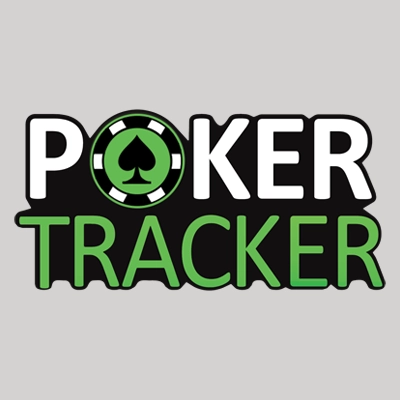
If spreadsheets give you a nice dopamine hit, PokerTracker 4 could be your soulmate. This HUD is the king of poker analytics, and it has everything from custom stat-building to in-depth leak detection. Its advanced filters let you analyze hands by position, stack size, or opponent type, and this makes it perfect for the grinders who like to live in the weeds. But with great power comes a steep learning curve. PT4’s interface isn’t winning any beauty contests, and newbies will probably feel like they’re trying to code for NASA. It’s best for high-volume players, stats nerds, and anyone who thinks “sample size” is a pickup line that will work.
Hold’em Manager 3: The Goldilocks Option

Hold’em Manager 3 is where usability meets depth. It has a clean, drag-and-drop interface that enables you to customize HUDs in minutes and features like “Player Types” auto-label opponents (Tag, Lag, Fish) based on their stats. HM3 excels in cash games, as it comes with dynamic reports that highlight your win rates by stake or time of day. It’s somewhat less customizable than PT4 but far more intuitive—a sweet spot for the players who want insights without a PhD in data mining. This one is best for the mid-stakes grinders, multitablers, and anyone who prefers “plug-and-play” over a ton of tinkering.
DriveHUD: Budget-Friendly Basics
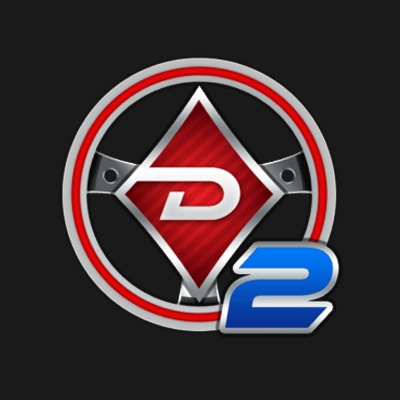
DriveHUD is the Hyundai of HUDs—reliable, affordable, and no frills. At half the price of PT4 or HM3, it has all of the essentials (VPIP, PFR, Cbet) with a concentration on speed over any type of complexity. Its built-in equity calculator and hand replayer are great for beginners who are just getting into data. The downside here is limited customization and a lot of pop-ups. But for $49.99 (vs. PT4’s $99), it’s a steal for micro-stakes players or casuals. This tool is best for noobs, budget-conscious grinders, and players who want “good enough” without having to ante up a lot of money.
Free Trials & Budget Hacks
Most HUDs do have free trials (7-30 days) so that players are able to try them out before they commit to paying. PokerTracker and HM3 cost $99-$150 for lifetime licenses, and DriveHUD sits at $49.99. You can check Black Friday sales or poker forums for discounts—old versions sometimes get price cuts when new ones drop. The best HUD isn’t the most expensive—it’s the one you’ll actually use!
Conclusion: This is Your Poker Brain on HUD
What have we learned about poker HUDs? One, a HUD shows you lots of stats. And two, it helps you to exploit your opponents. But it isn’t only a tool—it’s a complete mindset shift. It forces you to see patterns instead of randomness and trends instead of chaos. All of those VPIP and PFR numbers? They’re not only metrics; they’re a language unto themselves.
Look below for a quick summary of how using a poker HUD can level up your online poker game:
- Instant opponent profiling: Spot nits, maniacs, and calling stations at a glance.
- Leak detection: Uncover if you’re over-bluffing, folding too often, or missing 3-bet opportunities.
- Exploitation made easy: Target players who fold to 70% of cbets or call down with weak hands.
- Efficiency boost: Juggle multiple tables without losing track of who’s who.
So, pick a HUD. Any HUD. Use it until it feels like it is a part of your poker DNA. Then—and this is really important—forget that it’s there. The stats will begin to seep into your subconscious while you concentrate on your timing and outplaying the player who is behind those numbers!
The future of poker isn’t humans vs. bots. It’s humans with bots who use data to play bolder, smarter, and more creatively. Your edge isn’t in the software; it’s in how you wield it, so play ethically and always gamble responsibly!
Looking for more help while playing poker online? Check out our helpful poker cheat sheet that will guide you through the most important aspects of the game.

Alyssa contributes sportsbook/online casino reviews, but she also stays on top of any industry news, precisely that of the sports betting market. She’s been an avid sports bettor for many years and has experienced success in growing her bankroll by striking when the iron was hot. In particular, she loves betting on football and basketball at the professional and college levels.

